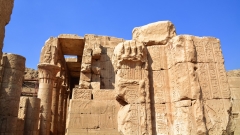New research suggests a slowing of continental plate movement was the critical event that enabled magma to rise to the Earth’s surface and deliver devastating knock-on impacts.
Major volcanic events occurred millions of years ago that caused such climatic and biological upheaval that they drove some of the most devastating extinction events in Earth’s history. Now, scientists have shed new light on the timing and likely cause of these cataclysmic volcanic events.
Surprisingly the new research suggests a slowing of continental plate movement was the critical event that enabled magma to rise to the Earth’s surface and deliver the devastating knock-on impacts. The study will be published today (September 9, 2022) in leading international journal Science Advances.
Earth’s history has been marked by major volcanic events, called Large Igneous Provinces (LIPs). The largest of these caused major increases in atmospheric carbon emissions that warmed Earth’s climate, drove unprecedented changes to ecosystems, and resulted in mass extinctions on land and in the oceans.
Using chemical data from ancient mudstone deposits obtained from a 1.5 km-deep (0.9 mile-deep) borehole in Wales, an international team led by scientists from Trinity College Dublin’s School of Natural Sciences was able to link two key events from around 183 million years ago (the Toarcian period).
The research team discovered that this time period, which was characterized by some of the most severe climatic and environmental changes ever, directly coincided with the occurrence of major volcanic activity and associated greenhouse gas release on the southern hemisphere, in what is currently known as southern Africa, Antarctica, and Australia.
Further investigation – and more importantly – the scientists’ plate reconstruction models helped them discover the key fundamental geological process that seemed to control the timing and onset of this volcanic event and others of great magnitude.
Micha Ruhl, Assistant Professor in Trinity’s School of Natural Sciences, led the team. He said:
“Scientists have long thought that the onset of upwelling of molten volcanic rock, or magma, from deep in Earth’s interior, as mantle plumes, was the instigator of such volcanic activity but the new evidence shows that the normal rate of continental plate movement of several centimeters per year effectively prevents magma from penetrating Earth’s continental crust.
“It seems it is only when the speed of continental plate movement slows down to near zero that magmas from mantle plumes can effectively make their way to the surface, causing major large igneous province volcanic eruptions and their associated climatic perturbations and mass extinctions.
“Crucially, further assessment shows that a reduction in continental plate movement likely controlled the onset and duration of many of the major volcanic events throughout Earth’s history, making it a fundamental process in controlling the evolution of climate and life at Earth’s surface throughout the history of this planet.”
The study of past global change events, such as in the Toarcian, allows researchers to disentangle the different processes that control the causes and consequences of global carbon cycle change and constrain fundamental Earth system processes that control tipping points in Earth’s climate system.
Reference: “Reduced plate motion controlled timing of Early Jurassic Karoo-Ferrar large igneous province volcanism” 9 September 2022, Science Advances.
DOI: 10.1126/sciadv.abo0866
The research was conducted as part of the International Continental Drilling Program (ICDP) Early Jurassic Earth System and Timescale (JET) project, and financially supported by the SFI Research Centre in Applied Geosciences (iCRAG), the Natural Environment Research Council UK (NERC), the National Science Foundation China, and the EU Horizon 2020 program.

